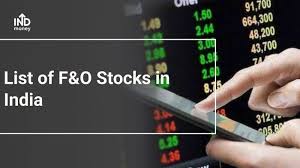F&O trading, encompassing Futures and Options, offers traders a dynamic avenue to capitalize on market movements. As the financial landscape evolves, understanding the intricacies of F&O trading becomes essential for daily market success. This guide delves into the fundamentals, strategies, and risk management techniques pivotal for effective trading in the derivatives market. Additionally, we will explore how staying informed about upcoming IPOs can complement your trading strategies.

Understanding F&O Trading
F&O trading involves agreements to buy or sell an asset at a predetermined future date and price. Futures contracts obligate the buyer to purchase, and the seller to sell, the underlying asset at the contract’s expiration. Conversely, options provide the buyer with the right, but not the obligation, to buy or sell the asset at a specified price before the option expires.
Key Components of F&O Trading
- Leverage: F&O trading allows traders to control a large position with a relatively small amount of capital. While this amplifies potential profits, it equally increases the risk of significant losses.
- Margins: To initiate F&O trades, traders must deposit a margin with their broker. This margin acts as collateral and varies based on the contract’s value and the broker’s requirements.
- Settlement: In India, F&O contracts are settled on a daily basis through a process known as Mark-to-Market (MTM). This means that profits and losses are realized and credited or debited to the trader’s account daily.
Essential Strategies for F&O Trading
To navigate the complexities of F&O trading, traders employ various strategies tailored to their risk tolerance and market outlook.
1. Hedging
Hedging involves taking an opposite position in the derivatives market to offset potential losses in the cash market. For instance, if a trader holds a long position in a stock, they might take a short position in its futures contract to protect against adverse price movements.
2. Arbitrage
Arbitrage exploits price discrepancies between the cash and derivatives markets. Traders simultaneously buy in one market and sell in another to lock in risk-free profits. However, such opportunities are rare and require swift execution.
3. Speculation
Speculators aim to profit from anticipated price movements. By analyzing market trends, economic indicators, and company performance, traders make informed decisions on buying or selling futures and options contracts.
Risk Management in F&O Trading
Effective risk management is crucial in F&O trading due to the inherent leverage and volatility.
- Position Sizing: Determine the amount of capital to allocate to each trade based on your risk tolerance. Avoid overexposure to a single position.
- Stop-Loss Orders: Implement stop-loss orders to automatically exit a trade at a predetermined price, limiting potential losses.
- Diversification: Spread investments across different sectors and instruments to mitigate risk.
- Regular Monitoring: Continuously monitor market conditions and adjust positions as necessary to manage risk effectively.
Capital Management Tips
Efficient capital management ensures sustainability in F&O trading.
- Start Small: Begin with a modest capital allocation to understand market dynamics and develop trading skills.
- Avoid Overtrading: Resist the temptation to trade excessively, as this can lead to significant losses.
- Maintain Liquidity: Keep a portion of your capital in liquid assets to manage margin calls and unforeseen market movements.
The Role of Upcoming IPOs in F&O Trading
Staying informed about upcoming IPOs can provide valuable insights for F&O traders.
- Market Sentiment: The success or failure of an IPO can influence overall market sentiment, affecting the performance of related stocks and sectors.
- Volatility Opportunities: IPOs often lead to increased volatility, presenting opportunities for traders to capitalize on price movements.
- Sector Rotation: New listings can signal shifts in sector performance, allowing traders to adjust their positions accordingly.
Conclusion
Mastering F&O trading requires a combination of knowledge, strategy, and discipline. By understanding the fundamentals, implementing effective risk and capital management techniques, and staying informed about market developments, traders can enhance their chances of success. Remember, F&O trading is not a guaranteed path to wealth but a tool that, when used wisely, can complement a well-rounded investment strategy. Additionally, keeping an eye on upcoming IPO can provide traders with opportunities to diversify and adjust their portfolios in response to market dynamics.